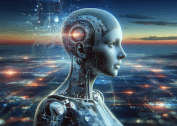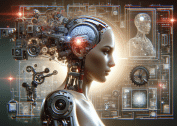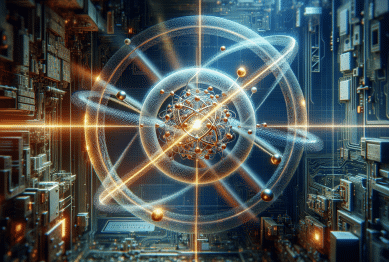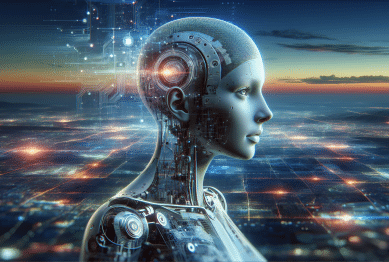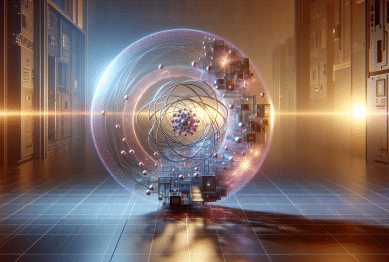Artificial intelligence is rapidly transforming daily routines. Explore how machine learning, data analytics, and smart devices are shaping transportation, healthcare, and how we interact with technology. This article breaks down real-world AI applications and what their emergence could mean for you.
Understanding Artificial Intelligence and Its Core Concepts
Artificial intelligence, often called AI, is a branch of computer science that enables machines to mimic human learning and decision-making. Across industries, its adoption is accelerating as organizations invest in advanced algorithms capable of processing complex data. Many people encounter AI without even noticing, whether through voice assistants, recommendation systems, or fraud detection tools.
A key element of this revolution is machine learning. Unlike traditional programming, where outcomes are predetermined, machine learning algorithms can adapt over time. By analyzing patterns in massive data sets, they improve their accuracy, helping to power smarter search results, medical diagnoses, and autonomous driving features. Data scientists play a major role, teaching AI systems how to recognize correlations and flag anomalies.
Another important component is natural language processing (NLP), which allows computers to understand and generate human language. Tools such as chatbots and virtual assistants use NLP to answer questions or perform basic tasks. The various subfields of AI—deep learning, robotics, computer vision—come together to create the seamless smart experiences many now expect from their devices. This blend of technologies lets AI move from the lab to your living room.
AI in Everyday Technology: Smart Assistants and Automation
AI-driven smart assistants are now embedded in many households. Devices like smart speakers use AI-powered voice recognition to control music, manage reminders, or even turn on appliances with a spoken command. Behind the scenes, natural language models and speech processing technologies interpret each word, helping devices deliver more tailored responses and anticipate user needs. These advancements reflect the rapid pace of automation in daily life, putting convenient controls literally at your fingertips.
Home automation extends beyond voice assistants. Smart thermostats learn your daily schedule and adjust heating or cooling automatically, maximizing energy efficiency using AI. Security cameras can distinguish between familiar faces and unknown visitors, reducing false alerts. AI even powers vacuum robots that map living spaces and optimize cleaning routes. As device manufacturers incorporate learning algorithms, smart technology becomes more proactive, handling repetitive tasks with increasing autonomy.
Many users notice that smart assistants seem to “get smarter” over time. That’s the learning part of AI at work. The more data collected about your preferences and habits, the better these tools become at anticipating what you want—such as playing your preferred playlist at the right time or suggesting a weather update before you leave home. This subtle personalization is quickly becoming a new expectation in how tech devices interact with people.
AI Transforming Healthcare: Diagnostics and Patient Care
Perhaps nowhere is the impact of AI more profound than in healthcare innovation. Machine learning aids medical professionals in analyzing complex data, such as images from scans. Algorithms help doctors detect early stages of diseases—including cancer or heart conditions—by highlighting subtle features that might be missed in traditional exams. This technology isn’t just about speed—it can support greater diagnostic accuracy and improve patient outcomes.
AI is also streamlining administrative processes for clinics and hospitals. Virtual assistants can handle patient intake forms and answer inquiries, allowing human staff to focus on more complex care. Predictive analytics use health records to flag patients at higher risk of readmission, directing resources where they’re most needed. These shifts help providers deliver more efficient, patient-centric care and make healthcare less fragmented, aligning with broader global efforts for accessible medicine.
Robotic systems are finding a place in operating rooms and physical therapy centers. In surgery, robots guided by AI can assist with intricate procedures, helping reduce the margin for error. Meanwhile, rehabilitation robots analyze patient movement and adjust therapy plans to maximize recovery. The integration of smart sensors and wearables further supports this progress, gathering real-time health data and alerting professionals when immediate intervention may be required.
Data Analytics and AI: Powering Smarter Cities and Transportation
A major frontier for AI is smart city planning, where data analytics shape decisions about traffic control, utilities, and public safety. Cities use AI to analyze sensor data from roads and infrastructure, optimizing traffic lights and emergency response routes. Smart traffic systems adapt in real time—reducing congestion, improving air quality, and even predicting potential accidents based on live traffic patterns. These infrastructure upgrades enable cities to serve growing populations more intelligently.
Transportation is on the brink of a further revolution, thanks to autonomous vehicles. Self-driving cars and buses rely on deep learning algorithms to interpret their surroundings, avoiding hazards and navigating complex environments. This technology has the potential to reduce accidents caused by human error and open new mobility options for those unable to drive themselves. While many regulatory and safety hurdles remain, ongoing trials suggest a not-so-distant future of AI-driven transit.
Public transportation systems are harnessing AI to improve scheduling and maintenance. Sophisticated predictive models monitor wear and tear, preventing costly breakdowns and service disruptions. Data from passenger flows inform everything from route planning to ticket pricing, helping agencies deliver more reliable and affordable services. By analyzing and responding to emerging trends, city planners can allocate resources more efficiently and ensure cleaner, safer travel experiences for everyone.
Ethical Considerations and the Future of Artificial Intelligence
The rapid rise of artificial intelligence raises important ethical questions. AI algorithms, if poorly designed or implemented, may reinforce existing biases in decision-making—especially in areas like hiring or loan approvals. Oversight and accountability are crucial to ensure these systems remain fair and transparent. Researchers and policymakers are working together to establish frameworks that encourage responsible data use and safeguard individual privacy.
Another consideration is the question of data security. As more personal information flows through AI-enabled systems, safeguarding data from breaches and misuse becomes a top priority. Innovations in cybersecurity now utilize AI to detect subtle threats, but the growing complexity also introduces vulnerabilities. The balance between convenience and protection continues to shape public dialogue and regulatory approaches.
Looking ahead, experts predict further blurring of the lines between human and artificial intelligence. Some envision systems that work alongside people as collaborative partners, rather than simple tools. Lifelong learning, adaptable software, and interdisciplinary collaboration could create new opportunities across industries—if implemented thoughtfully. The conversation around the future of AI reminds us: technology is a tool, and its positive impact depends on careful, inclusive design.
Preparing for a World Shaped by AI: Skills and Opportunities
The expansion of AI technology brings fresh career paths and skill requirements. Emerging roles in data science, cybersecurity, and automation engineering need people who can understand both the algorithms and the human context in which they operate. Companies are increasingly seeking employees with technical proficiency and creative problem-solving abilities, reflecting the diverse applications of AI in business, research, and government.
A variety of educational platforms and universities offer introductory courses in artificial intelligence, coding, and data analytics for learners at every level. Programs might include hands-on projects, case studies, or tools for mastering programming languages such as Python. These opportunities can help job seekers adapt to evolving demands and demystify complex concepts, making the technology more accessible to a wider audience. Upskilling supports workforce adaptability as AI continues to reshape industries.
Community-driven initiatives, like coding bootcamps and public workshops, also play a vital role. They show that learning about AI isn’t limited to computer scientists—anyone curious about technology’s future can participate. As greater portions of daily life integrate with intelligent systems, the ability to critically assess and leverage these tools will become an essential part of digital literacy. Transformative AI is just beginning to shape possibilities—those prepared will find new ways to thrive.
References
1. National Institute of Standards and Technology. (n.d.). Artificial Intelligence. Retrieved from https://www.nist.gov/artificial-intelligence
2. Stanford University. (n.d.). Artificial Intelligence and Life in 2030. Retrieved from https://ai100.stanford.edu/2016-report
3. U.S. Department of Energy. (n.d.). Big Data and Artificial Intelligence at DOE. Retrieved from https://www.energy.gov/articles/big-data-and-artificial-intelligence-doe
4. World Health Organization. (n.d.). The future of AI in healthcare. Retrieved from https://www.who.int/publications-detail-redirect/9789240029200
5. Brookings Institution. (n.d.). Algorithmic Bias Detection and Mitigation. Retrieved from https://www.brookings.edu/research/algorithmic-bias-detection-and-mitigation-best-practices-and-policies-to-reduce-consumer-harms
6. Coursera. (n.d.). AI for Everyone. Retrieved from https://www.coursera.org/learn/ai-for-everyone



